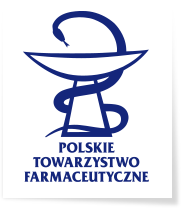Bartosz Wojdyła, Monika Marcinkowska, Marcin Kołaczkowski
Targeted Protein Degradation via the Endosome–Lysosome Pathway: A Novel Pharmacological Strategy for Modulating Extracellular Protein Function
2025-05-16
Research subject. Targeted protein degradation (TPD) represents an innovative therapeutic approach that harnesses endogenous cellular degradation pathways to eliminate pathogenic proteins. Unlike classical inhibitors, which function by blocking enzymatic activity or protein-protein interactions, TPD strategies enable complete removal of target proteins. Initially developed within the ubiquitin-proteasome system (e.g., PROTACs), this concept has been extended to extracellular protein degradation (eTPD), leveraging the endosome-lysosome axis.
Objective of the Research. This article provides a comprehensive review of eTPD strategies since their inception in 2019, with a particular focus on mechanistic insights and potential therapeutic applications. Both receptor-mediated degradation via lysosome-targeting receptors (LTRs) and alternative approaches, such as MONOTAB, which undergo receptor-independent endocytosis, are discussed. Additionally, challenges related to pharmacological activity assessment and pharmacokinetic profiling are analyzed.
Materials and Methods. A literature search was conducted in Scopus and MEDLINE using keywords including “lysosomal”, “protein degradation”, and “extracellular protein degradation”. The analysis included peer-reviewed experimental studies reporting results from in vitro and/or in vivo models, as well as review articles. Conference abstracts, letters to the editor, commentaries, and opinion pieces were excluded.
Results. Extracellular protein degradation is facilitated through three primary mechanisms: 1) receptor-mediated endocytosis via LTRs, 2) transcytosis-based strategies (e.g., TransMoDE), and 3) receptor-independent endocytosis via nanoparticles (e.g., MONOTAB). Among these, the LTR-based approach, which exploits receptors such as CI-M6PR, ASGPR, LRP-1, and scavenger receptors (SRs), has garnered the most attention. Experimental studies have demonstrated the efficacy of this technology in degrading proteins implicated in tumor progression (e.g., PD-L1, VEGF, MMP-9) and neurodegenerative disorders (e.g., b-amyloid). Some eTPD strategies have also exhibited therapeutic efficacy in animal models, including melanoma and gastrointestinal malignancies.
Conclusions. eTPD represents a promising therapeutic modality capable of eliminating disease-associated extracellular proteins that lack conventional ligand-binding pockets. The selectivity of eTPD strategies can be modulated by the tissue-specific expression of LTRs, enabling precise therapeutic targeting. Despite existing challenges, such as limited pharmacokinetic data and potential immunogenicity concerns, the continued development of eTPD technologies holds the potential to revolutionize treatments for cancer, autoimmune diseases, and neurodegenerative disorders.
Keywords: targeted protein degradation, endosome-lysosome axis, extracellular protein degradation, endocytosis, transcytosis.
© Farm Pol, 2024, 80(11): 723–737
Targeted Protein Degradation via the Endosome–Lysosome Pathway: A Novel Pharmacological Strategy for Modulating Extracellular Protein Function

